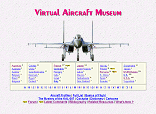 |
SPAD |
 |
| FRANCE |
Silk merchant Armand Deperdussin (1867-1924) was associated from 1910 with a series of notable monoplanes. Built precursor in 1909 for show in a Paris store. By 1914 monoplanes bearing Deperdussin name were used not only privately but by several military authorities. Designed by Louis Bechereau, these aircraft were especially noted for speed performances in 1912-1913, and in some instances for monocoque construction. Deperdussin, a great promoter, became involved in financial difficulties and in 1915 the company as named above was declared bankrupt. The Deperdussin name had links with several companies, including the British Deperdussin Company with which John Porte (see Seaplane Experimental Station) was connected. Initials SPAD were also ascribed to Societe Provisoire des Aeroplanes Deperdussin and Societe Parisienne des Avions Deperdussin, as well as Societe des Productions Armand Deperdussin.
After Deperdussin was arrested for embezzlement the
company was renamed Societe Pour I'Aviation et ses
Derives in 1915, thus retaining these initials. Chief technician
was at first Bechereau, later Andre Herbemont.
Company became world famous for SPAD single-seat
fighters and fast reconnaissance adaptations. More than
2,000 fighters built at Suresnes factory alone; great numbers
under license in France and elsewhere. Classic tractor
single-seat biplane flown late 1915 as SPAD V;
developed into SPAD VII of 1916, thus establishing company's
name in aviation history. Characteristic design feature
was two-bay wing cellule with special form of bracing.
Combination with Hispano-Suiza 8-cylinder vee engine
was major factor in success. SPAD XII had a 37 mm
engine-mounted gun. From May 1917 improved two
machine-gun type XIII replaced VII. Large numbers ordered
by U.S. SPAD XX of late 1918 was two-seat fighter to
Herbemont design and precursor of new Bleriot-SPAD line
of single-strut monocoque-fuselage biplane fighters, built
after
|
 All the World's Rotorcraft |
